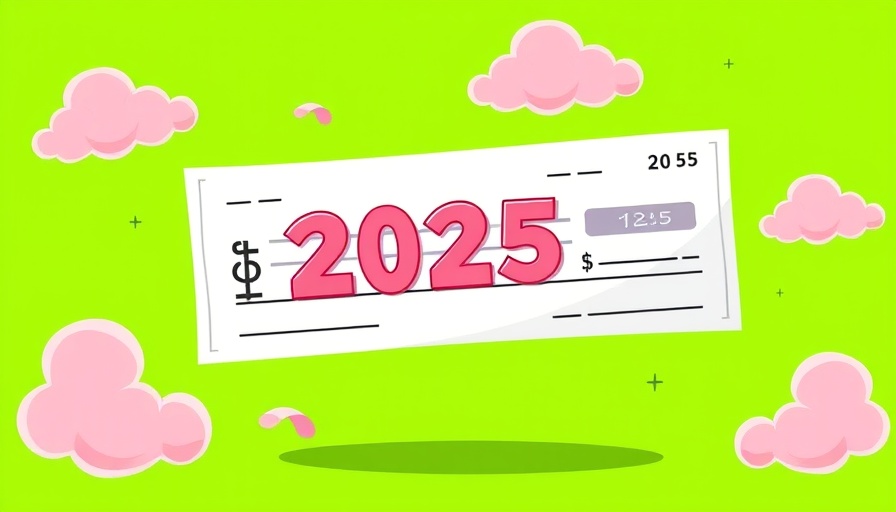
The Shift from Paper to Digital: A Historic Financial Transition
In a groundbreaking move that signifies a shift in the way government transactions are processed, President Trump signed an executive order on March 25, mandating the cessation of paper checks for tax refunds, Social Security payments, and other government benefits. By September 30, 2025, all payments must be made electronically. This policy aims to enhance efficiency while protecting consumers from potential fraud.
Why This Change Matters: The Benefits of Going Digital
The benefits of electronic payments are manifold. Government officials, including a spokeswoman from the White House, have highlighted that transitioning to electronic payments will not only cut costs but also increase security and efficiency. “By phasing out outdated paper-based systems,” they maintained, “we enhance the security of federal payments.” For many Americans, the prospect of quicker access to their funds through direct deposit or digital wallets is another positive facet of this transition.
Potential Challenges: Are We Ready for the Change?
While the transition to an all-electronic payment system may prove beneficial, challenges remain. As Jennifer Tescher, CEO of the Financial Health Network, stated, “Consumer awareness and help making the shift” will be critical for a smooth transition. Many older Americans, who may still rely on paper checks, could find this abrupt change daunting. Service providers will need to step up efforts to educate these consumers about the new systems and offer assistance.
Looking Back: The Decline of Paper Payments
Historically, paper checks have been a staple of the federal payment system. However, their usage has been declining as technology advances. Most monthly Social Security payments and tax refunds are already being disbursed electronically; thus, the new order merely accelerates a trend that has been in motion for years. Statistics show that electronic payments are vastly preferred due to their speed and reliability.
Future of Transaction Banking: Predictions and Insights
As the financial landscape evolves, experts predict that this order could pave the way for more innovations in payment processing. With technology improving, we may soon witness new methods of payment that could further enhance consumer experience and security. Digital wallets, cryptocurrency and biometric payments are just a few of the possibilities on the horizon. As societies embrace a cashless future, the government’s transition may set the tone for broader changes across various sectors.
A Look at the Broader Impact: Who Will Be Affected?
According to government reports, this shift will impact millions of Americans who depend on direct payments. While younger generations are typically adept at managing digital transactions, older populations may face more difficulties. This demographic is often more accustomed to traditional payment methods. Understanding their unique needs and offering adequate support is critical for a successful transition.
Final Thoughts: Championing for Consumer Education
The mandate to eliminate paper checks represents a significant, modernizing effort by the federal government. It will require a collective effort to ensure that consumers are well-informed and comfortable with the change. The success of this initiative hinges not merely on policy but also on the ability to meet the needs of those most vulnerable to technological transitions.
 Add Row
Add Row 
 Add
Add 


 Add Row
Add Row 
 Add
Add
Write A Comment